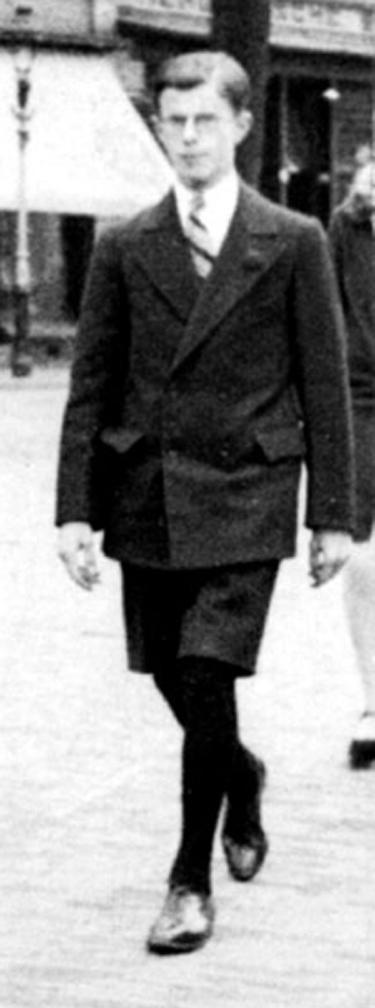
Figure 1.-- Frans Leferink was a 16-year old Dutch boy. We see him in 1927 wearing a double-breasted knee pants suit. Note the formal black long stockings. |

|
Frans Leferink was a 16-year old Dutch boy. We see him in 1927 wearing a double-breasted knee pants or short pants suit. As we don't see the buttons at the knee hem, it would probably be best described as a short pants suit. We still see boys wearing formal knee pants suits in both Belgium and the Netherlasnds during the 1920s. And the short pants boys wore were often qy\uite long at the time. Frans also wears a natty stripped tie and botinaire. Note the formal black long stockings. Frans is rather elegantly dressed. We suspect he came from a well-to-do conservative family.
Frans Leferink was the youngest son of the B. J. Leferink family. The family lived in the Twente section of eastern Holland near the German border. The family were farmers, shopkeepers, and tradesman. Frans's father seems to have owned a tobacconist's shop which was called "Cuba" because of the imported tobacco he sold. Cuba was famed for its tobacco and cigars. We note the a photograph of the family on a country outing. By the way they are dressed, we assume they must have been in a car. Perhaps they were visiting family in the country.
Twente or Twenthe is a non-administrative region located in the eastern Netherlands along the German border. The nasme is presumably derived from the Tuihanti, a Germanic tribe that settled in the region sometime at the beginning of the first millenium. The family name suggests that the family had lived there for some time. Names ending in 'ink' are typical in Twente: Assink, Wolderink, Leferink. Twente is the most urbanised and easterly part of the province of Overijssel. It is bordered by the rivers Regge and Dinkel. The three largest cities in Twente are Almelo, Enschede, and Hengelo. The cities as in other areas in the Low Lands developed around textile mills. When the railroads arrived in the 19th century, the economies began to diversify. A lot of textiles were still produced in Twente at the time these family snapshots were taken. It is possible that Frans' family had something to do with it. One of the best known textile factories was Van Heek, producers of excellent linens and their "Schuttersveld" corduroy, especially made for laborers, gardeners and Boy Scouts. They no longer excist. The local spoken dialect is known as Twents, a Low German dialect. Many people speak dialect, not only the farmers. Along with Limburgs, it is oned is one of the two regional Dutch languages. Twente today has has one of Netherlands largest exile communities of Syriacs (Assyrians, Arameans and Chaldeans)--Middle Eastern Christians.
We do not know much about Frans' childhood. Family photo give some glimpses of his childhood, but picture rather formal scenes. The family seems both loving and warm. We see Frans with him with his older brother Antoon who was about 13 or 14 at the time. They are on some kind of family outing about 1920 when Frans was 10 or 11 years old. It looks to be a warm summer day for wearing long stockings. But perhaps they were dressed up for some special occassion. Lomg stockings in addition to warmth were worn for formality.
The family was a conservative Catholic family. This seems to have been a factor in how the boys were dressed. The Netherlands was of course predon\minarely Protestant, but there was a small Catholic minority. Most of the Catholics lived in rural areas or small towns.
We see the family again on a warm summer day in about 1924 when he was approximately 13 or 14 years old. He is is enjoying a beer with his family. That of course would have been unthinkable in America. But apparently Dutch fmilies allowed boys to have a taste or small glass, perhaps because the wearher was warm. And now Frans looks to be in his early teens. Even so he is still wearing long stockings. Even as an older teenager, Frans wears a dressy short trouser suit with white shirt and tie and long black stockings. The family was Catholic and obvuiusly conservative in the way their children were allowed to dress. We see him here at age 16-years in 1927. He is wering a double-breasted knee pants or short pants suit. As we don't see the buttons at the knee hem, it would probably be best described as a short pants suit. We still see boys wearing formal knee pants suits in both Belgium and the Netherlasnds during the 1920s. And the short pants boys wore were often quite long at the time. Frans also wears a natty stripped tie and botinaire. Note the formal black long stockings. Frans is rather elegantly dressed. This is what might be expected from a well-to-do conservative family at the time.
Navigate Related HBC Pages:
[Return to the Main "L" ordinary bio pages]
[Return to the Main ordinary bio page]
[Return to the Main Dutch family page]
[Bangs]
[Neck ties]
[Double-breasted suits]
[Short pants suits]
[Knee pants suits]
[Long stockings]
Navigate the Boys' Historical Clothing Web Site:
[Introduction]
[Activities]
[Biographies]
[Chronology]
[Clothing styles]
[Countries]
[Bibliographies]
[Contributions]
[FAQs]
[Glossaries]
[Images]
[Links]
[Registration]
[Tools]
[Boys' Clothing Home]
